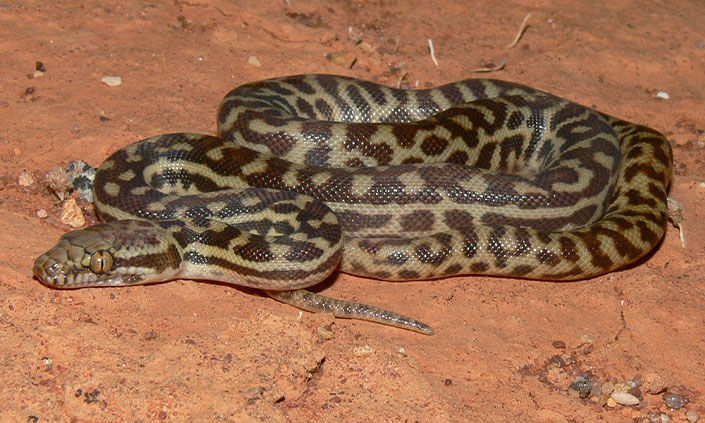New Guinea Python species discovered in Cape York
Scientists have discovered three python species coexisting in Cape York, including the first mainland Australian record of a Papua New Guinea species.

Balaclava Rd, North Ryde, Macquarie University
NSW 2109 Australia
Scientists have confirmed for the first time that a python species from Papua New Guinea - Antaresia papuensis - lives on mainland Australia in remote Cape York Peninsula, alongside two other small pythons.
The two other python species, one not previously identified as living in the region, were recognised through genetic analyses, which revealed them as the Children’s Python - A. childreni - and Cape York spotted python (A. maculosa peninsularis).

Published in the Australian Journal of Zoology on June 26, the research reveals these three distinct python species coexisting in an area of northern Cape York – a remarkable concentration of diversity for these small predators.
The discovery makes northern Queensland, Australia’s python diversity hotspot, with a record eight species now documented in the region, according to lead author Dr Dan Natusch from Macquarie University’s School of Natural Sciences and director of the conservation charity People For Wildlife.
World’s smallest pythons
The three newly-identified species aren’t the massive serpents most people imagine pythons to be; Dr Natusch says the three snakes are among the world’s smallest python species.
“All three snakes reach about 1.2 metres at absolute maximum, but typically closer to 80 centimetres, so fairly diminutive as far as pythons go,” he says.

However, while none of the pythons pose a threat to humans, the tiny predators are still voracious hunters with diverse appetites. Young pythons feast on skinks and geckos, while larger snakes will also add small birds, mammals, and frogs to their menu.
“They’re pretty generalist in their diet, and around Cape York they live in a range of habitats, from heathlands to open woodlands, rainforests and rocky scree,” Dr Natusch says.
Ancient travellers across land bridges
The Papua New Guinea python (Antaresia papuensis) likely arrived in Australia via ancient land bridges that connected the two landmasses as recently as 5,000 years ago during ice ages.

“The last time you could walk from Australia to New Guinea was probably around 5,000 years ago,” Dr Natusch explains. “For a very long time, there’s been a constant interchange. The animals that were trapped during multiple periods have diverged on New Guinea, probably re-migrated back into Australia, meeting ‘cousins’ who had always remained there.”
This migration highway explains why Cape York hosts numerous New Guinea species, including green pythons, cassowaries, eclectus parrots and palm cockatoos. Meanwhile, Australian species like agile wallabies have travelled north to colonise dry areas of southern New Guinea.
The research also confirms the Children’s Python (A. childreni) and spotted python (A. maculosa peninsularis) occur in the same northern Cape York area, making it a unique meeting point for western, eastern and northern python lineages.
Snake spotting for beginners
While genetically distinct, the three species look remarkably similar, requiring DNA analysis to confirm their identity. However, colour patterns offer clues for keen observers.
The Papua New Guinea python displays light grey to dark brown background colouration with small, ragged-edged dark brown patches.
The spotted python shows greyish-brown to sandy-blonde colouring with larger chocolate to reddish-brown spots. The Children’s Python has the most distinctive appearance, with dark tan markings forming distinct bands rather than blotches.
“Most new species being discovered are cryptic species, meaning you need molecular genetic techniques to tell them apart,” says Dr Natusch.
Cape York’s remote location and difficult access has meant a lot of species have likely remained undiscovered.
Dr Natusch, who grew up in this remote part of the world, says the python discovery is one of a range of research studies he is leading into the area’s remarkable natural fauna.
The finding reflects global trends in species discovery, where genetic techniques increasingly reveal hidden diversity among animals that appear identical to the naked eye.